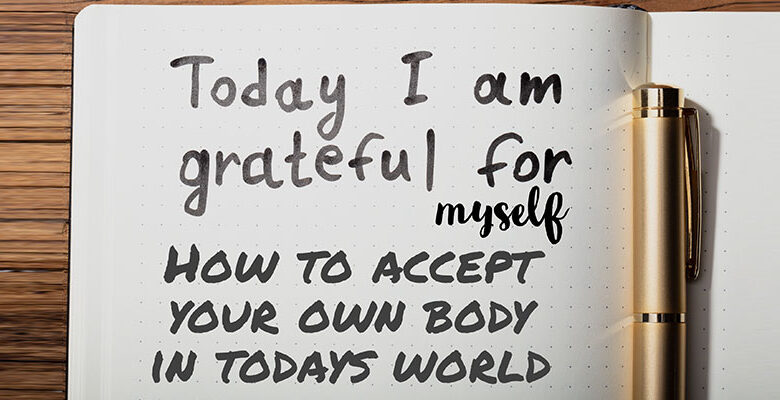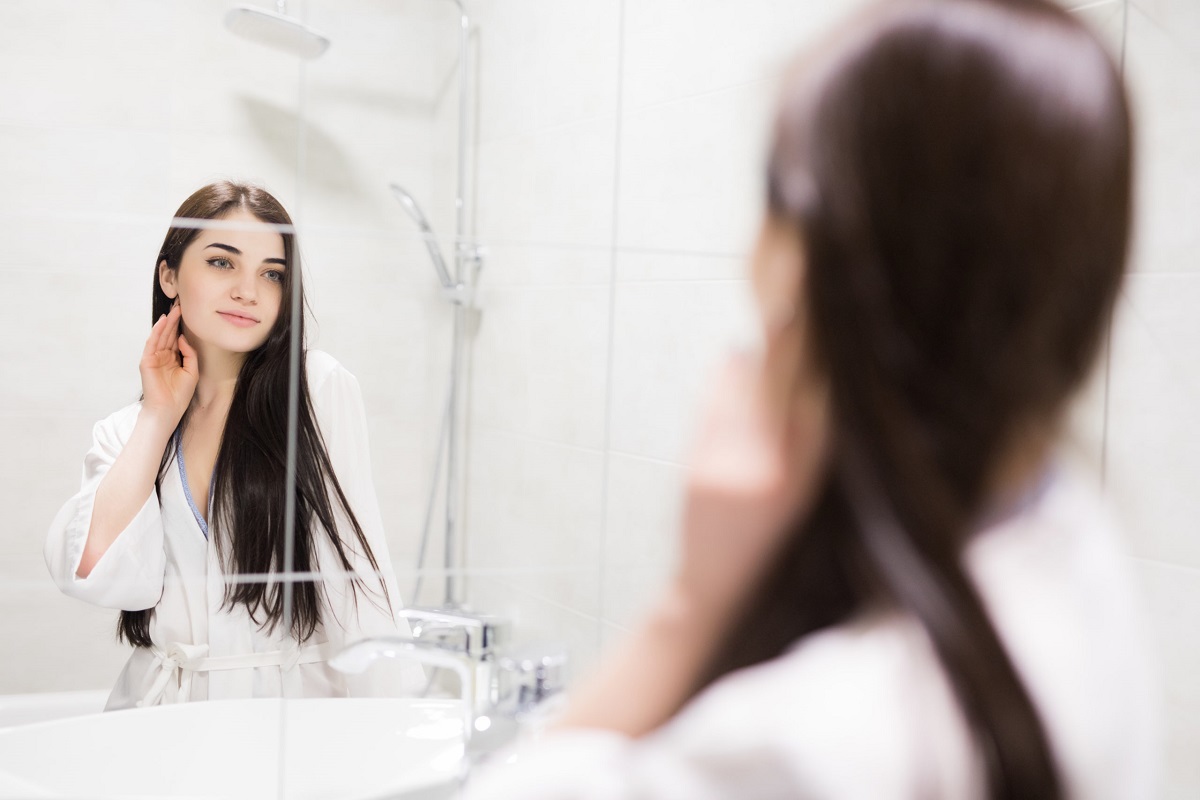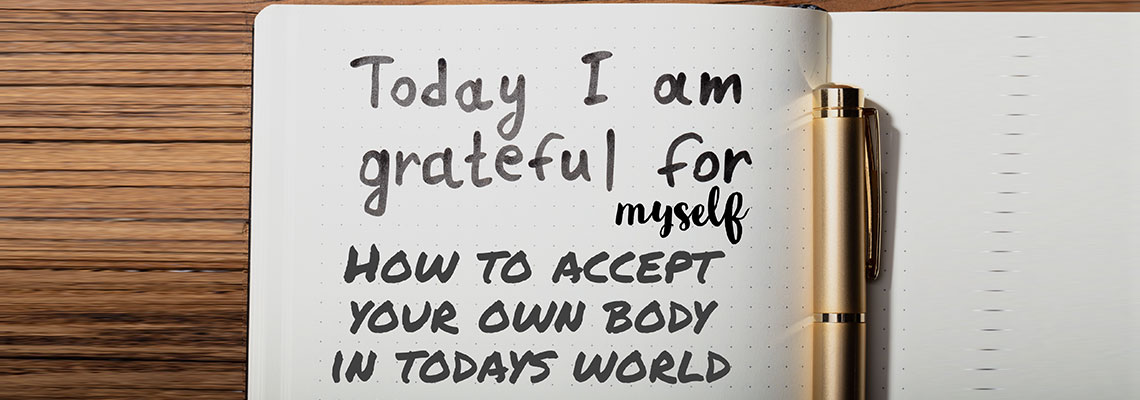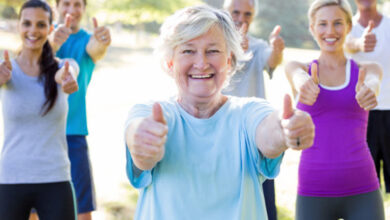
10 Ways to Finally Accept Your Body
10 Ways to Finally Accept Your Body – It’s a journey of self-discovery, a process of learning to love and appreciate the incredible vessel that carries you through life. This journey isn’t about achieving a specific body shape or size, it’s about cultivating a deep sense of self-acceptance and embracing the beauty and strength that resides within you.
This article delves into ten powerful strategies that can help you navigate the complexities of body image and cultivate a more positive relationship with your body. From embracing self-compassion to challenging negative thoughts, each step offers a unique perspective on how to shift your mindset and embrace the incredible being you are.
Embrace Self-Compassion
Imagine a close friend struggling with self-doubt and negativity. You’d likely offer them kindness, understanding, and encouragement, right? So why do we often withhold these same compassionate qualities from ourselves? Embracing self-compassion is crucial for body acceptance because it shifts our inner dialogue from harsh criticism to gentle acceptance.
Cultivating Self-Kindness
Self-compassion involves treating ourselves with the same kindness and understanding we would offer a loved one. It’s about recognizing our imperfections and vulnerabilities without judgment. Here are some practical ways to cultivate self-kindness:
- Practice mindful self-talk:Pay attention to your inner voice and challenge negative thoughts. Replace self-criticism with encouraging and supportive statements. For example, instead of thinking, “I look awful in this outfit,” try, “I’m doing my best, and I’m grateful for my body.”
- Engage in self-soothing activities:Find activities that bring you comfort and relaxation, such as taking a warm bath, listening to calming music, or spending time in nature. These activities can help to reduce stress and promote feelings of self-compassion.
- Practice gratitude:Focus on the things you appreciate about yourself and your body. This can help shift your perspective from negativity to appreciation.
Self-Criticism Hinders Body Acceptance
Self-criticism is a major obstacle to body acceptance. When we constantly criticize our bodies, we create a negative self-image that can lead to feelings of shame, anxiety, and depression. This internal negativity can make it difficult to appreciate our bodies for what they are and can lead to unhealthy behaviors like disordered eating or excessive exercise.
“Self-compassion is not about self-indulgence. It is about recognizing that we are all human and that we all make mistakes. It is about being kind to ourselves when we are struggling.”
Kristin Neff
Celebrate Body Diversity
Embracing body diversity means acknowledging and celebrating the beautiful spectrum of body shapes, sizes, and abilities. It’s about moving beyond narrow, unrealistic beauty standards and appreciating the unique individuality that each body represents. By celebrating diversity, we can foster a more inclusive and accepting society, where everyone feels comfortable and confident in their own skin.
The Beauty of Body Diversity
The beauty of body diversity lies in its sheer variety and individuality. Every body is unique, a testament to the amazing range of human physical expression. From the curves of a full-figured woman to the lean physique of a dancer, each body has its own distinct charm and grace.
It’s important to recognize that beauty is not confined to a single mold but exists in a multitude of forms.
Learning to accept your body is a journey, not a destination. One of the key steps is to understand how you relate to food. Often, we get caught up in restrictive diets or “mindful eating” techniques, but sometimes, a more intuitive approach is what we need.
To truly embrace your body, it’s important to break free from rigid rules and explore the difference between mindful versus intuitive eating, as explained in this insightful article breaking mindful versus intuitive eating. This understanding can help you develop a healthier relationship with food, which is crucial for achieving true body acceptance.
Examples of Body Diversity in Media and Culture
The representation of body diversity in media and culture is slowly but surely evolving. We’re seeing more diverse body types being portrayed in films, television shows, and advertising campaigns. This increased visibility is crucial for challenging narrow beauty standards and promoting body positivity.
Learning to love your body is a journey, and part of that journey is nourishing it with good food. A delicious and healthy option is a high protein shrimp burrito bowl , packed with lean protein and fresh veggies.
This kind of meal can fuel your body and mind, giving you the energy to focus on self-love and acceptance, which are key components of the 10 ways to finally accept your body.
- Film and Television:Movies like “Love, Simon” and “Dumplin’” feature characters of different sizes and shapes, showcasing their diverse experiences and challenges. Television shows like “Shrill” and “This Is Us” also feature characters with varying body types, promoting inclusivity and representation.
- Fashion:The fashion industry is embracing body diversity by featuring models of all sizes and shapes in runway shows and advertising campaigns. Brands like ASOS, Target, and Lane Bryant are leading the way in offering clothing that flatters a wide range of bodies.
- Social Media:Social media platforms like Instagram and TikTok have become hubs for body positivity movements, where individuals share their stories and experiences, challenging unrealistic beauty standards. Influencers like Ashley Graham, Tess Holliday, and Iskra Lawrence have gained immense popularity for promoting body acceptance and self-love.
One of the key steps in accepting your body is learning to nourish it with healthy, delicious food. That’s why I love making quick and easy breakfasts like these baked veggie egg cups. They’re packed with protein and veggies, making them a satisfying and guilt-free way to start the day.
When you feel good about what you’re putting into your body, it’s easier to appreciate the amazing vessel it is!
The Impact of Societal Beauty Standards
Societal beauty standards have a profound impact on body image. For decades, the media and advertising have perpetuated narrow, unrealistic ideals of beauty, often favoring thinness and specific features. These standards can lead to feelings of inadequacy, shame, and dissatisfaction with one’s own body, particularly among young people.
It’s crucial to recognize that these standards are often arbitrary and based on outdated and harmful notions of beauty.
“Beauty is not a size, it’s a feeling.”
Unknown
Practice Mindful Eating
Mindful eating is a powerful tool for body acceptance. It involves paying full attention to your eating experience, without judgment, and fostering a more positive relationship with food. By becoming more aware of your eating habits and sensations, you can develop a deeper understanding of your body’s needs and signals, leading to healthier choices and a greater sense of well-being.
The Role of Mindful Eating in Body Acceptance
Mindful eating encourages a shift from a focus on external rules and restrictions to a more intuitive approach to food. It helps you connect with your body’s internal cues of hunger and fullness, allowing you to eat when you are truly hungry and stop when you are satisfied.
This process can help you break free from the cycle of restrictive dieting and emotional eating, promoting a more balanced and compassionate relationship with food and your body.
Techniques for Mindful Eating
Developing mindful eating practices involves cultivating awareness and presence during meals. Here are some techniques to help you become more attuned to your eating habits and sensations:
- Choose a quiet and comfortable setting:Eliminate distractions like television or phones to focus solely on your meal.
- Engage all your senses:Pay attention to the colors, aromas, textures, and flavors of your food. Notice the sounds of chewing and swallowing.
- Eat slowly and savor each bite:Put down your fork between bites and take the time to fully appreciate the taste and experience of each mouthful.
- Check in with your hunger and fullness levels:Before you start eating, assess your hunger level on a scale of 1 to 10. Throughout your meal, check in with your body to see how satisfied you feel.
- Practice non-judgmental observation:Notice your thoughts and feelings about food without judging them. Accept your experiences without labeling them as good or bad.
Mindful Eating and Emotional Well-being
Mindful eating is not just about food; it’s about fostering a deeper connection with yourself. By paying attention to your body’s signals and practicing self-compassion, you can develop a more positive relationship with your emotions. Mindful eating can help you identify and manage emotional eating patterns, reducing the likelihood of using food to cope with stress, boredom, or other difficult emotions.
Move Your Body with Joy
Moving your body isn’t just about achieving a certain physique or hitting a fitness goal. It’s about connecting with your body, finding joy in movement, and celebrating its capabilities. When you find activities that bring you pleasure, you’re more likely to stick with them, creating a positive relationship with your body and fostering self-love.
Diverse Movement Practices
There are countless ways to move your body, and the key is to find what resonates with you. Here are some examples of diverse movement practices:
- Dance: Whether it’s ballet, hip-hop, salsa, or a freestyle session in your living room, dance is a joyful expression of movement that can boost your mood and confidence.
- Yoga: Yoga combines physical postures with breathing exercises and meditation, promoting flexibility, strength, and mindfulness. There are various styles of yoga, from gentle Hatha to more vigorous Vinyasa, allowing you to find a practice that suits your needs and preferences.
- Hiking: Hiking is a fantastic way to connect with nature, get some fresh air, and enjoy the beauty of your surroundings. It’s a low-impact activity that can be adapted to different fitness levels.
- Swimming: Swimming is a full-body workout that’s gentle on your joints. It’s a great way to cool down on a hot day, and it can be enjoyed by people of all ages and abilities.
- Martial Arts: Martial arts like karate, taekwondo, or judo are physically challenging and mentally stimulating. They can improve your strength, flexibility, coordination, and self-discipline.
Movement for Body Acceptance
Moving your body with joy can contribute significantly to body acceptance and self-love. Here’s how:
- Increased Body Awareness: Engaging in activities that require you to move your body helps you become more aware of your physical sensations and how your body feels. This increased awareness can foster a more positive relationship with your body.
- Improved Body Image: When you move your body in a way that feels good, you start to appreciate its capabilities and strengths. This can lead to a more positive body image and a sense of pride in your body.
- Reduced Stress and Anxiety: Physical activity releases endorphins, which have mood-boosting effects. Regular movement can help reduce stress, anxiety, and depression, which can contribute to a more positive outlook on your body.
- Increased Confidence: As you become more physically fit and capable, your confidence grows. This increased confidence can translate into a more positive self-image and a greater sense of self-worth.
Seek Professional Support
Navigating body image concerns can be a challenging journey, and sometimes, seeking professional support can be incredibly beneficial. Therapy offers a safe and structured space to explore your thoughts, feelings, and behaviors related to your body image.
The Role of Therapy in Addressing Body Image Concerns
Therapy provides a valuable platform to address deeply ingrained negative thoughts and feelings about your body. A therapist can help you:
- Identify and challenge negative self-talk and body image beliefs.
- Develop coping mechanisms for dealing with difficult emotions and triggers.
- Explore the root causes of your body image issues, such as societal pressures, past experiences, or personal values.
- Build a more positive and compassionate relationship with your body.
Benefits of Working with a Therapist Specializing in Body Image and Eating Disorders, 10 ways to finally accept your body
Working with a therapist specializing in body image and eating disorders offers several advantages:
- Specialized Expertise:These therapists have in-depth knowledge of the complexities of body image and eating disorders, enabling them to provide tailored and effective treatment plans.
- Evidence-Based Treatments:They often utilize evidence-based therapies like Cognitive Behavioral Therapy (CBT) and Dialectical Behavior Therapy (DBT) to address specific challenges.
- Understanding and Validation:They create a non-judgmental and supportive environment where you can feel understood and validated in your struggles.
- Focus on Body Acceptance:They help you shift your focus from striving for an ideal body to accepting and appreciating your body as it is.
Resources for Finding Qualified Professionals
Finding a qualified therapist can be daunting, but several resources can assist you:
- National Eating Disorders Association (NEDA):NEDA offers a directory of therapists specializing in eating disorders and body image concerns. Their website provides information on various aspects of body image and eating disorders, including resources for finding support.
- Academy for Eating Disorders (AED):The AED maintains a directory of certified eating disorder professionals, including therapists, dietitians, and psychiatrists.
- Your Insurance Provider:Contact your insurance provider to inquire about therapists in your network who specialize in body image and eating disorders.
- Local Mental Health Organizations:Many local mental health organizations and community centers offer therapy services, including those focused on body image and eating disorders.
Remember Your Worth: 10 Ways To Finally Accept Your Body

You are worthy, deserving of love and respect, regardless of your body size or shape. This is a fundamental truth that often gets lost in the noise of societal pressures and unrealistic beauty standards. Body acceptance is not about conforming to a particular ideal; it’s about embracing your unique self and recognizing your inherent value.
The Journey of Self-Discovery
Body acceptance is a journey of self-discovery and empowerment. It’s about challenging negative thoughts and beliefs about your body and replacing them with self-compassion and appreciation. It’s about recognizing that your worth is not tied to your physical appearance but rather to your inner qualities, your talents, and your contributions to the world.
“Your body is your temple, treat it with respect.”
Unknown
Inspiring Stories of Body Acceptance
Countless individuals have embraced their bodies and found true happiness. They have learned to love themselves unconditionally, celebrating their unique features and strengths. These stories serve as powerful reminders that body acceptance is possible and that it can lead to a life filled with joy, confidence, and self-love.
“I used to be so critical of my body, but now I see it as a vessel that carries me through life. I’m grateful for everything it does for me.”Anonymous
Final Wrap-Up

Ultimately, body acceptance is a continuous journey of self-love, self-care, and self-discovery. It’s about recognizing your inherent worth, celebrating your unique qualities, and choosing to focus on the positive aspects of your body. As you move through this journey, remember to be patient with yourself, practice kindness, and surround yourself with positive influences.
You are worthy of love and acceptance, just as you are.






